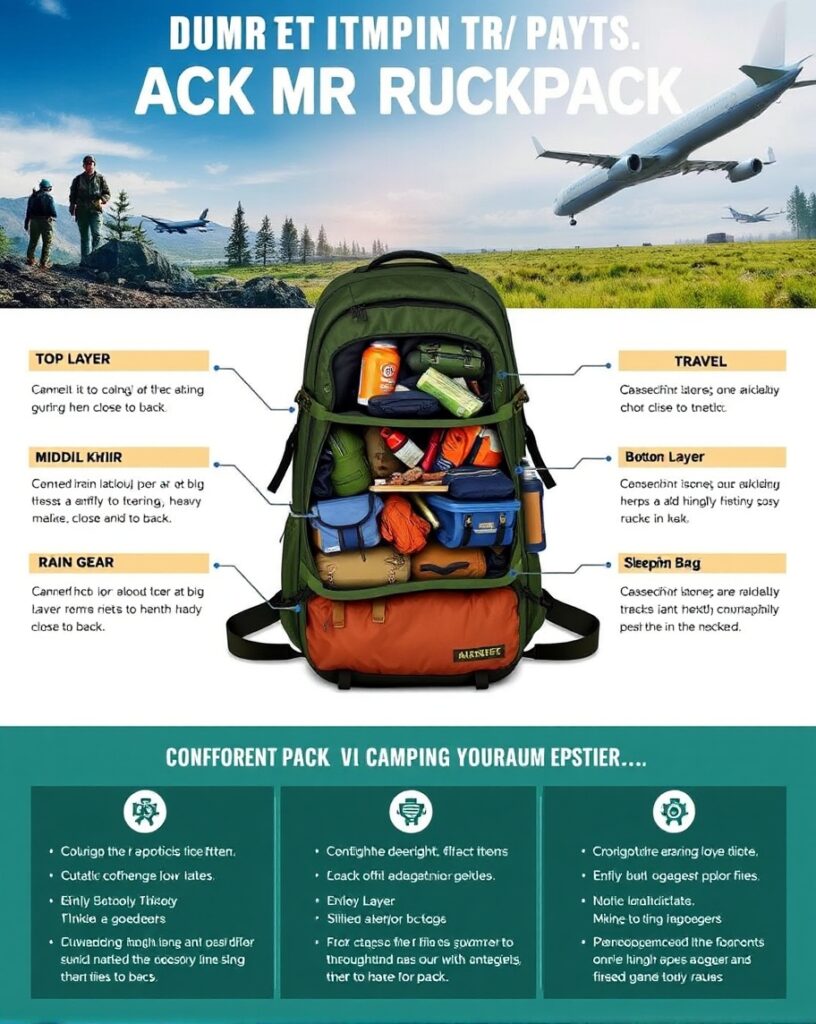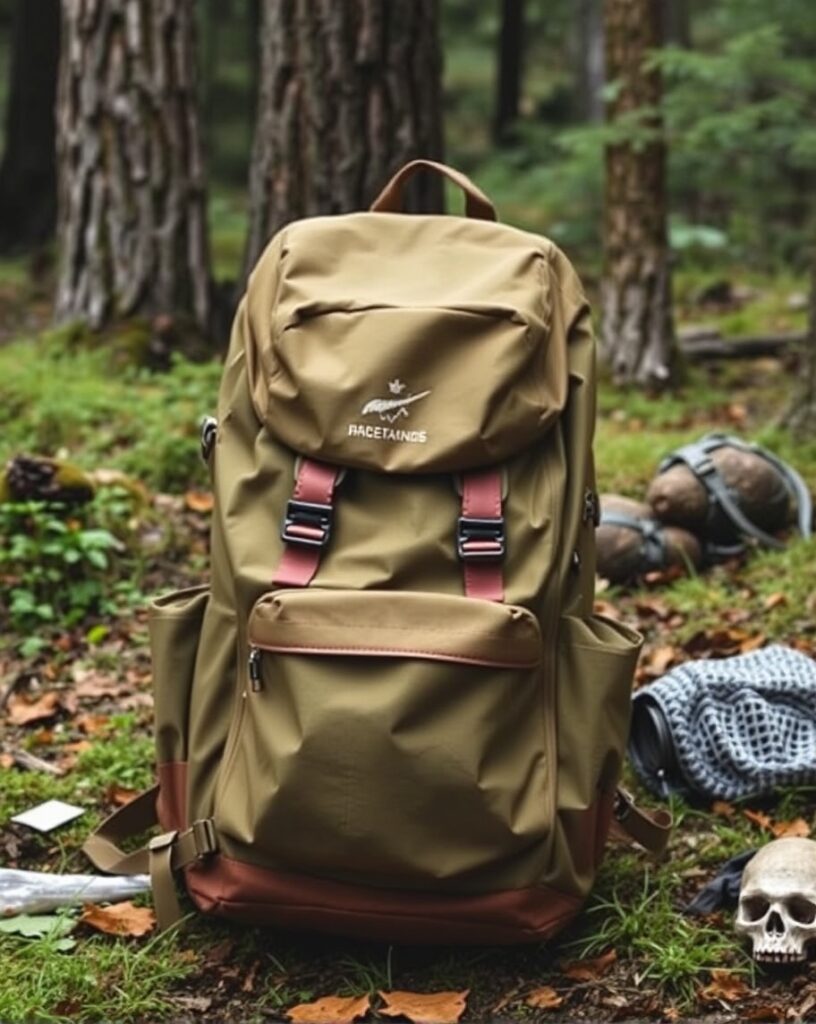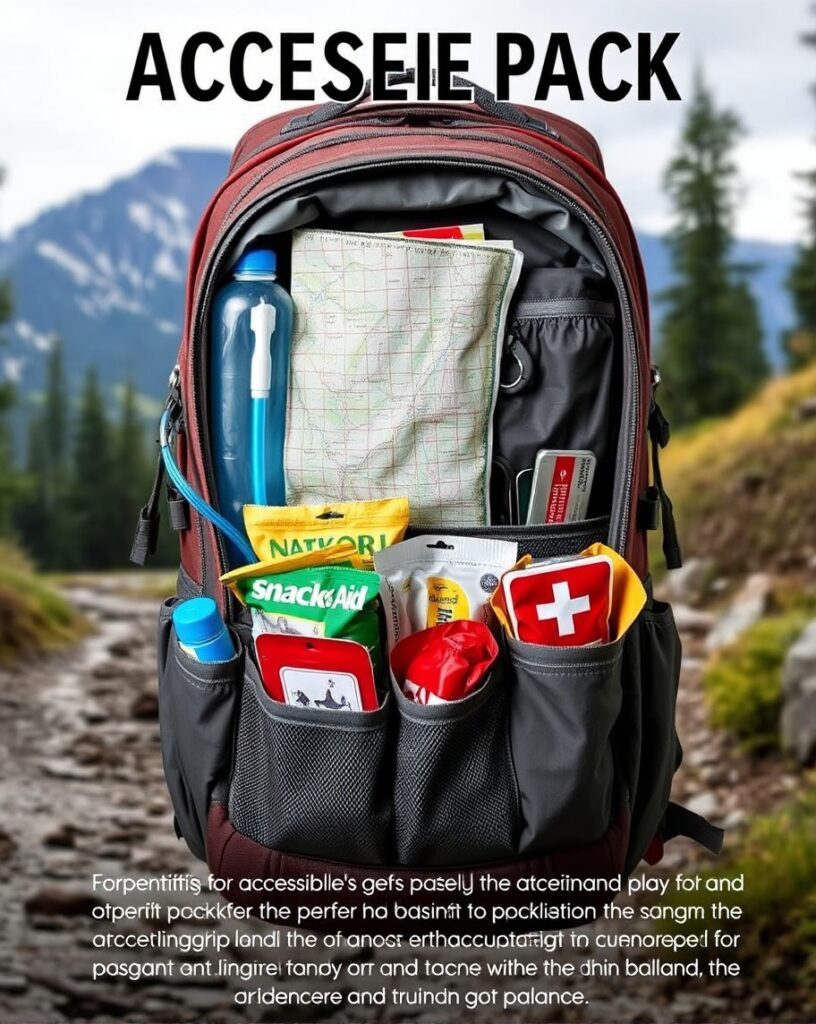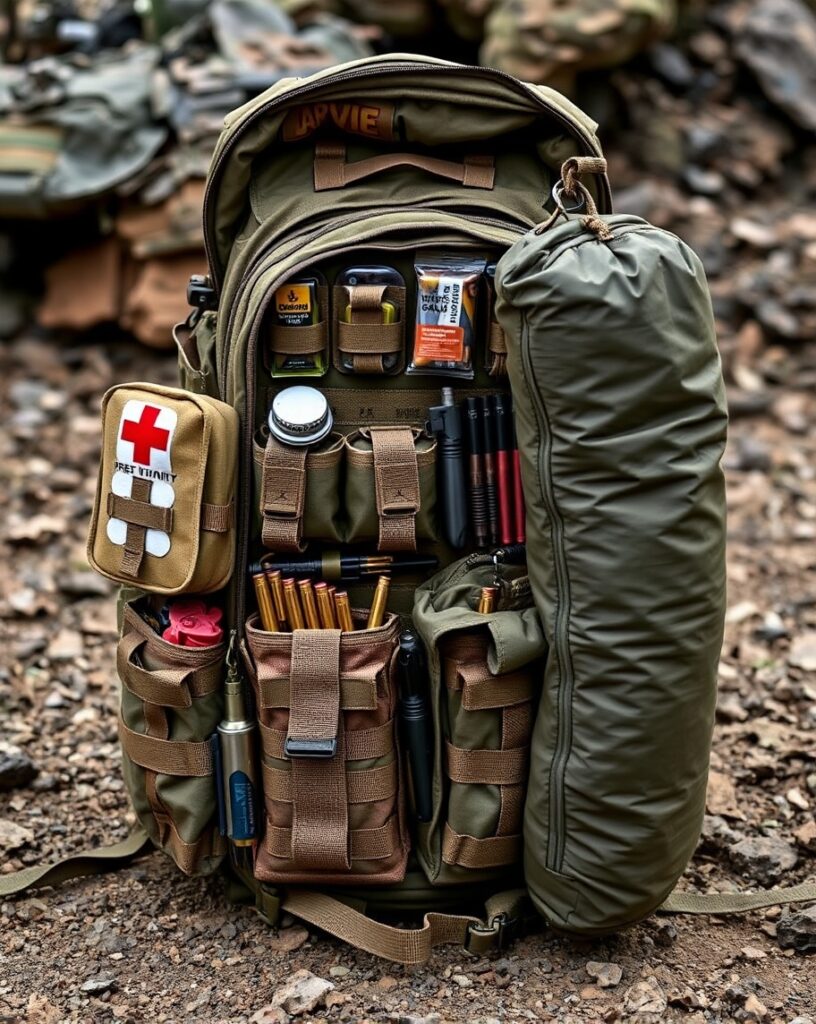Knowing how to pack a rucksack effectively can make or break your next adventure, whether you’re heading out for a weekend camping trip, a long-distance hike, or a travel expedition.
Proper rucksack packing ensures comfort, balance, and ease of access to essential gear, so you can focus on enjoying the journey instead of dealing with disorganized or poorly packed bags.
In this guide, we’ll walk you through step-by-step instructions on how to pack a rucksack for camping, hiking, traveling, and even military purposes.

Table of Contents
1. Why Packing a Rucksack Properly Matters

Understanding the basics of weight distribution, accessibility, and organization is key to packing a rucksack that stays comfortable, even over long distances.
Whether you’re preparing for a multi-day hike or a simple weekend trip, the way you pack directly impacts your comfort. Poorly packed rucksacks can cause strain, imbalance, and unnecessary stress on your body, while a well-packed bag ensures you can walk, hike, or travel with ease.
Key Principles:
- Weight Distribution: Heavier items should be placed in the middle of the bag, close to your back, for better balance and stability.
- Accessibility: Essential items like snacks, water, and rain gear should be easy to reach, stored in the top or external pockets.
- Organization: Using packing cubes or dry bags can keep your items organized and maximize space inside the rucksack.
2. How to Pack a Rucksack for Camping
If you’re wondering how to pack a rucksack for camping, it’s important to prioritize your shelter, sleeping gear, and cooking equipment. These bulky items require careful placement to avoid an unbalanced load.
Tips for Packing a Camping Rucksack:
- Bottom Layer: Pack your sleeping bag and any items you won’t need until the end of the day (e.g., spare clothing, camp shoes).
- Middle Layer: Store heavier items like your tent, cooking stove, and food close to your back. This helps distribute weight evenly.
- Top Layer: Keep frequently used items like rain gear, snacks, and navigation tools at the top for quick access.
- External Pockets: Use side pockets for water bottles and attach hiking poles or a camp chair to external loops if necessary.
Camping Essentials:
- Tent or tarp
- Sleeping bag and pad
- Cooking gear (stove, pot, utensils)
- Food and water
3. How to Pack a Rucksack for Traveling

When packing for a trip, knowing how to pack a rucksack for traveling is essential to stay organized and avoid rummaging through your bag every time you need something.
Your approach will vary depending on your destination and the length of your stay, but smart organization is key.
Tips for Packing a Travel Rucksack:
- Use Packing Cubes: Organize clothes into packing cubes or compression bags to maximize space and prevent wrinkles.
- Roll Your Clothes: Rolling clothes instead of folding saves space and helps keep them neat.
- Tech and Toiletries: Keep electronics, chargers, and toiletries in separate compartments or a small toiletry bag for easy access at airport security.
- Footwear Placement: Pack shoes at the bottom of your bag, inside a separate shoe bag to keep your clothes clean.
Traveling Essentials:
- Clothes for the trip (packed by day or activity)
- Toiletries
- Electronics and chargers
- Travel documents
4. How to Pack a Rucksack for Hiking

If you’re learning how to pack a rucksack for hiking, the focus shifts to efficiency, weight reduction, and easy access to essential gear like water and a first aid kit. Proper weight distribution is critical on long hikes, especially when carrying food, water, and emergency gear.
Tips for Packing a Hiking Rucksack:
- Bottom Layer: Store lighter items such as sleeping bags or clothes.
- Middle Layer: Place heavier items like food, water, and cooking equipment close to your back for better balance.
- Top Layer: Keep rain gear, a map, snacks, and a first aid kit accessible at the top or in the external pockets.
- Hydration System: If your rucksack has a hydration sleeve, make sure your water reservoir is filled and properly positioned.
Hiking Essentials:
- First aid kit
- Map and compass or GPS
- Water (in bottles or a hydration bladder)
- Snacks and food
- Rain jacket and warm clothing
5. How to Pack a Military Rucksack

Military personnel follow strict protocols when packing their rucksacks, prioritizing both efficiency and survival. When learning how to pack a military rucksack, focus on modular packing, durability, and the ability to quickly access essential survival items.
Tips for Packing a Military Rucksack:
- Modular System: Use MOLLE pouches for easy access to tactical gear and essentials like first aid supplies and ammunition.
- Heavier Items at the Top: In military settings, heavier items like ammunition or body armor are often packed higher for quick access.
- Survival Gear: Keep survival items like a knife, fire starter, and water purification tablets within easy reach.
- External Attachments: Attach sleeping gear or large items externally to keep them accessible without overloading the pack.
Military Essentials:
- First aid kit and survival gear
- Ammunition or tactical equipment
- Sleeping gear
- Rations and water
6. Expert Tips for Efficient Rucksack Packing
No matter what your journey entails, efficient packing can make all the difference. Here are some expert tips for getting the most out of your rucksack:
- Use Dry Bags: Not only do dry bags keep your gear organized, but they also provide waterproofing, essential for camping and hiking.
- Keep Essentials Handy: Items like maps, snacks, and water bottles should always be within easy reach.
- Practice Makes Perfect: Test your rucksack before the trip to ensure it’s packed properly and feels comfortable. Adjust the weight distribution as needed.
read this also: Slow Travel Movement: Embrace the Art of Mindful Exploration
7. Common Mistakes to Avoid When Packing a Rucksack
To avoid discomfort or injury, here are some common packing mistakes to avoid:
- Overpacking: Keep your pack light by only bringing essentials. Every ounce adds up on long hikes or trips.
- Poor Weight Distribution: Packing heavy items too far from your back can cause imbalance and back pain.
- Inaccessible Items: Avoid burying important gear deep in the bag. Always prioritize easy access.
Conclusion: Pack Smart for Your Next Adventure
Packing a rucksack is an art, whether you’re camping, traveling, hiking, or preparing for military duties.
By following these expert tips on how to pack a rucksack, you’ll ensure your load is balanced, organized, and ready for any adventure.
The key to success lies in careful planning, efficient use of space, and tailoring your packing strategy to the specific activity at hand. Happy packing!
Share this content:

